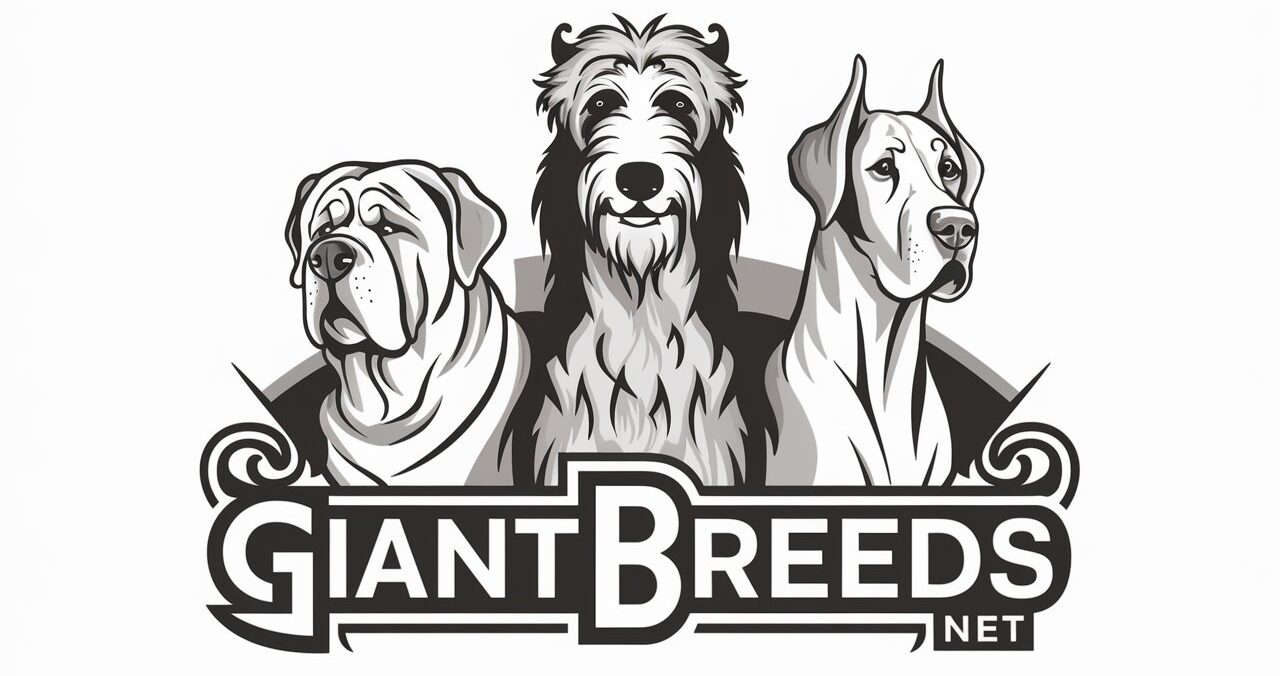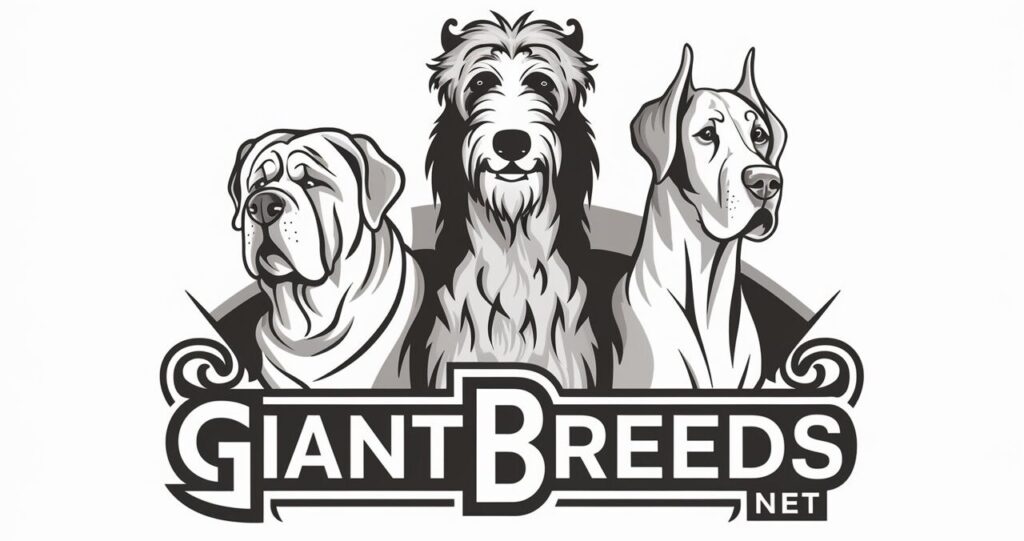
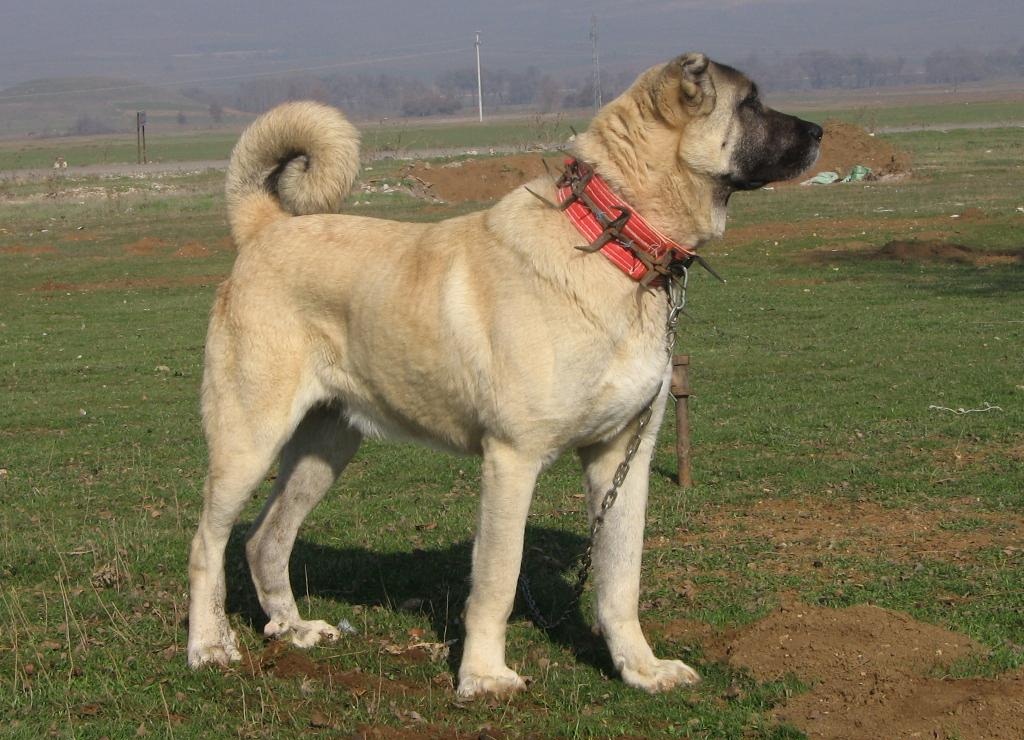
Characteristics of the Kangal
The Kangal Dog: A Guardian Breed with a Gentle Heart
The Kangal dog breed, originating from Turkey, is a remarkable example of strength, courage, and gentleness combined into one majestic animal. Known for their protective instincts and loyalty, Kangals have served as guardians for flocks and families alike, earning their place as a respected and beloved breed worldwide.
Characteristics of the Kangal Breed
Size and Appearance
Kangals are large, powerful dogs, with males typically weighing between 110 to 150 pounds and standing up to 29 inches tall. Females are slightly smaller but still command a presence with their size and strength. They possess a short, dense double coat, usually fawn or sable in color, with a distinctive black mask on their face and ears, adding to their noble appearance.
Temperament
Despite their imposing size, Kangals are known for their calm and affectionate temperament. They are fiercely loyal and protective, yet they are not aggressive unless provoked. This breed exhibits a natural confidence and a serene demeanor, often described as gentle giants.
Intelligence and Training
Kangals are highly intelligent and respond well to consistent training. They are independent thinkers, which can be a challenge for inexperienced owners. However, with proper socialization and training, they can be well-mannered and responsive companions.

Exercise Needs
Originally bred for guarding livestock, Kangals have moderate exercise needs. They thrive in environments where they can roam and play, such as homes with large yards. Their agility and athleticism are remarkable for their size, making them capable of swift movements when necessary.
🛠️ Skill Track Compatibility
Why These Tracks Are Listed:
Every giant breed has strengths shaped by instinct, structure, and temperament. The Skill Tracks listed here highlight areas where this breed is most likely to thrive—not just in training, but in purpose. These aren’t requirements or limitations. They’re opportunities. When matched well, Skill Tracks bring out the best in both dog and human—offering focus, fulfillment, and a deeper working bond.
Kangal is good at Protection because of their strength, speed, and courage. They assess threats calmly and act only when needed.
Kangal is good at Guarding because of their territorial mindset and independence. They need guidance but thrive in serious guarding roles.
Kangal is good at Tracking & Scent Work because of their intelligence and curiosity. They follow trails with intent and focus.
Health and Lifespan
Kangals are generally healthy dogs with a lifespan of 12 to 15 years. Regular veterinary check-ups and a balanced diet are essential to maintain their well-being. They are prone to certain health issues typical of large breeds, so prospective owners should be aware of these potential concerns.
The Role of Kangals Today
While their historical role was to protect livestock from predators, today’s Kangals have adapted to various roles, including family pets and protectors. Their loyalty and protective nature make them excellent companions, especially for those with the space to accommodate their size and energy.
In conclusion, the Kangal dog breed is a testament to the harmonious balance between power and gentleness. Their protective instincts, combined with their loving nature, make them a unique and cherished breed. For those considering a Kangal as a pet, understanding and meeting their needs is crucial for a harmonious relationship with these noble guardians.
For more detailed information on the Kangal breed and tips on care, training, and health, visit the comprehensive guides available at Betterpet and K9 Web.
Why does the Kangal make a Great Pet
The Kangal: A Gentle Giant and Loyal Protector
The Kangal dog, a breed that hails from the town of Kangal in Turkey’s Sivas province, is a majestic and powerful canine known for its protective instincts and gentle nature. Often misunderstood due to its imposing size and muscular build, the Kangal is much more than a guardian; it’s a loyal companion, a gentle giant with a calm demeanor that makes it an excellent pet for families and individuals alike.
Origins and History
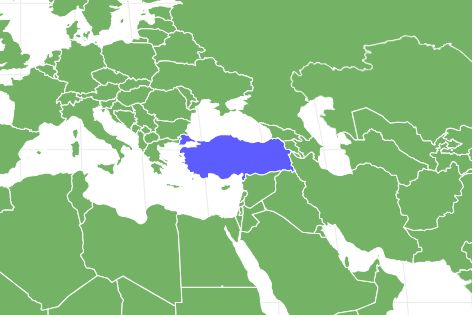
The Kangal’s origins can be traced back to the Kangal town in Turkey, where they were bred by villagers to protect their flocks from predators. With their impressive size, these dogs were adept at deterring wolves and other wild animals, a trait that is still valued in the breed today.
Physical Characteristics
Kangals are large-to-giant dogs, with males standing at 29 inches and females at 27 inches. They possess a short, dense double coat, usually in pale tan, with a distinctive black mask on their face. Despite their size, Kangals are agile and athletic, traits that contribute to their effectiveness as flock guardians.
Temperament
Kangals are known for their independent, calm, and protective temperament. They are not aggressive unless provoked, making them reliable and safe companions. Their loyalty and affectionate nature endear them to their families, and they are known to be particularly good with children when socialized properly.
Exercise and Care
As a breed with a history of guarding livestock, Kangals have moderate exercise needs that should be met to keep them healthy and content. They thrive in homes with ample space to roam and play, and they require regular mental stimulation to prevent boredom.
Health and Lifespan
Kangals are generally healthy dogs with a lifespan of 11 to 13 years. They do have some breed-specific health concerns, but with proper care and regular veterinary check-ups, they can lead full, active lives.
Training and Socialization
Training a Kangal requires patience and consistency, as they are an independent breed. Early socialization is crucial to ensure they are well-adjusted and comfortable around other pets and strangers. Kangals respond well to positive reinforcement and require a firm, but gentle hand in training.
The Kangal in the Home
In the home, the Kangal is a protective presence, always on the lookout for potential threats, yet gentle and loving with its family. They form strong bonds with their owners and are known for their courage and independence. A Kangal’s protective nature is balanced by its calm and affectionate temperament, making it a well-rounded pet for those who can accommodate its size and exercise needs.
Conclusion
The Kangal is a breed that embodies strength, loyalty, and gentleness. Its protective instincts make it an excellent guardian, while its calm nature makes it a wonderful family pet. For those looking for a loyal companion that will provide security and affection, the Kangal is a breed that stands out as a great choice.
For more detailed information on the Kangal breed, their care, and how to train them, you can visit comprehensive resources such as K9 Web and Betterpet. These sources provide in-depth knowledge that can help potential owners understand what to expect when bringing a Kangal into their home. Whether you’re an experienced dog owner or considering your first puppy, the Kangal offers a unique blend of qualities that make it a remarkable pet.
History
The Kangal: A Noble Guardian with a Storied Past

The Kangal dog, a breed synonymous with strength and protection, has a rich history deeply rooted in the Sivas region of central Turkey. These majestic dogs have been an integral part of Turkish shepherding for centuries, their lineage tracing back to the ancient Molosser dogs dating around 600 B.C. The Kangal’s name is derived from the town and district of Kangal in Sivas Province, which lies in the heart of Turkey’s Central Anatolia Region.
Historically, the Kangal was bred by shepherds to safeguard their flocks against formidable predators like wolves and bears. Their impressive bite force, measured at 743 PSI, is a testament to their guardian role. Despite their power, Kangals are known for their gentle nature with livestock and their unwavering loyalty to their human companions.
The breed’s physical characteristics are as impressive as their history. Males can stand between 70–80 cm tall and weigh between 48–60 kg, while females are slightly smaller. With a lifespan of 12-15 years, these dogs are not only powerful but also enduring.
The Kangal’s role has transcended its origins. Beyond the pastures of Turkey, these dogs have been employed in conservation efforts in Africa. In countries like Namibia, Kenya, and Tanzania, Kangals protect local flocks from cheetahs, contributing to the preservation of these endangered big cats. This innovative use of the breed has led to a significant reduction in the number of cheetahs killed by farmers, showcasing the Kangal’s adaptability and the positive impact they can have on wildlife conservation.
The debate over whether the Kangal and the Anatolian Shepherd are separate breeds continues among canine enthusiasts. Some argue that the term “Anatolian Shepherd” is a catch-all for shepherd dogs from the Anatolian region, while the Kangal is a distinct breed with specific traits.
The Kangal’s journey from the ancient past to the present day reflects the breed’s resilience and versatility. As guardians of flocks and now protectors of endangered species, the Kangal continues to be a symbol of noble guardianship and a testament to the enduring bond between humans and dogs. For those interested in learning more about this remarkable breed, further information can be found through various resources dedicated to the history and characteristics of the Kangal.
Specific Needs and Considerations
The Kangal: A Comprehensive Guide to Their Care and Needs
Understanding the specific needs and considerations of the Kangal is crucial for anyone considering bringing this noble breed into their home. Here’s a detailed look at what it takes to ensure the well-being and happiness of a Kangal dog.
Physical and Environmental Needs
Kangals are large dogs, with males typically weighing between 110 to 145 pounds and females slightly lighter. They possess a double coat that provides insulation, requiring regular grooming to maintain their coat’s health. Brushing a few times a week and occasional baths will keep their coat in top condition.
These dogs are not suited for apartment living; they thrive in environments where they have ample space to roam and exercise. A large, securely fenced yard or a farm where they can fulfill their natural guarding instincts is ideal. Kangals have a high activity level and need daily exercise to maintain their physical health and prevent behavioral issues. Without a job to do, a Kangal may develop nuisance behaviors out of boredom.
Behavioral and Training Considerations
Early socialization and consistent training are essential for managing the dominant tendencies of the Kangal. They are intelligent and learn quickly, but they also have an independent streak that requires a confident and experienced handler. Positive reinforcement techniques work best, as they respond well to rewards and praise.
Kangals are known for their strong protective instincts, which means they can be wary of strangers. Proper socialization from a young age can help them become more comfortable around new people and situations. Despite their protective nature, they are known to be gentle and affectionate with their family, showing a softer side to those they trust.
Health and Nutrition
A balanced diet is vital for the Kangal’s health. High-quality dog food that meets their nutritional needs, considering their size and activity level, is essential. Regular veterinary check-ups will help catch any health issues early on. The Kangal is generally a healthy breed, but like all large breeds, they can be prone to hip dysplasia and other joint-related conditions.
Mental Stimulation
Kangals are not only physically imposing but also mentally sharp. They require mental stimulation to keep them engaged and content. Puzzle toys, training sessions, and interactive play can help keep their minds active. Their work as livestock guardians provides them with both physical and mental exercise, so providing them with tasks or challenges can be beneficial.
In conclusion, the Kangal is a breed that commands respect and admiration. They are not the right fit for everyone, but for those who can meet their needs, they offer unmatched loyalty and companionship. With the right environment, training, and care, a Kangal can be a magnificent and fulfilling addition to the right home. If you’re considering a Kangal as your next canine companion, ensure you’re prepared to commit to their specific needs for a harmonious and happy life together.
Physical Powers
The Mighty Kangal: A Force of Nature
The Kangal dog, a breed that commands respect with its sheer presence, is a marvel of canine strength and power. Originating from the rugged terrains of Turkey, these dogs are not just pets but guardians of flocks, a role they have perfected over centuries. With a history steeped in the ancient past of central Turkey, particularly the Sivas region, the Kangal has been the shepherd’s companion, protecting sheep from predators like wolves and bears.
A Kangal’s physical power is evident in its muscular build, capable of swift and agile movements despite its large size. Males can stand 30 to 32 inches tall and weigh between 110 to 145 pounds, while females are slightly smaller, standing 28 to 30 inches tall and weighing 90 to 120 pounds. This size and strength allow them to confront and deter predators effectively.
But what truly sets the Kangal apart is its bite force. While exact numbers can vary, it is widely recognized that the Kangal has one of the strongest bite forces among dogs. This formidable bite is a crucial aspect of their ability to protect and defend.
Moreover, the Kangal’s agility is surprising for its size. Capable of reaching speeds up to 30 miles per hour, the Kangal combines its strength with remarkable speed, making it a formidable opponent against any would-be predator.
The Kangal’s physical capabilities are matched by its temperament. Known for being protective, loyal, and adaptable, they are calm and controlled, only displaying their power when necessary. This balance of strength and temperament makes the Kangal a respected breed and a true force of nature.
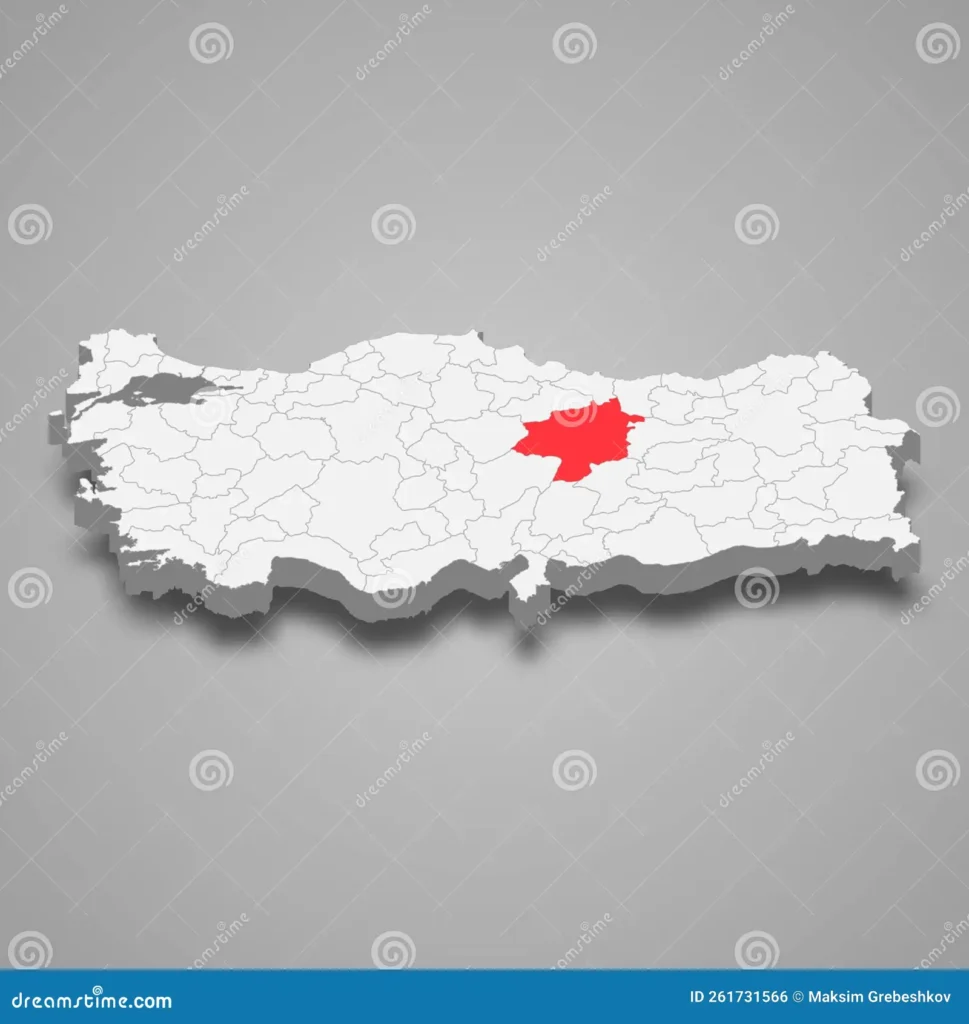
For those who may consider a Kangal as a companion, it’s essential to understand their needs for space, exercise, and a clear role within the family unit. They thrive on having a job to do and require an owner who understands and respects their heritage and natural instincts.
The Kangal is more than just a dog; it’s a legacy of the Sivas region, a symbol of strength, and a testament to the enduring bond between humans and dogs. As guardians of flocks and companions to shepherds, Kangals remind us of the profound capabilities and the noble spirit that dogs bring into our lives.
Ailments
The Kangal breed, known for its strength and protective instincts, is generally considered a healthy and robust dog breed. However, like all breeds, Kangals are predisposed to certain health conditions. The most common ailments associated with the Kangal breed include hip dysplasia, a condition where the thighbone doesn’t fit snugly into the hip joint; entropion, an eyelid disorder that causes the eyelid to roll inward; and lipoma, which are benign fatty tumors.
Hip dysplasia can lead to arthritis and impair the dog’s movement, affecting its quality of life. Entropion can cause discomfort and damage to the eye if not treated. Lipomas, while typically not harmful, can grow large and may require surgical removal if they impede movement or function.
It’s important for Kangal owners to be aware of these conditions and seek veterinary care if they notice symptoms such as limping, difficulty moving, eye irritation, or unusual growths on their dog. Regular check-ups and a healthy lifestyle can help manage these conditions and ensure a good quality of life for these majestic dogs.
Temperament
The Kangal breed, originating from Turkey, is renowned for its protective and loyal temperament. These dogs are known to be calm and affectionate, making them excellent family pets. Their protective nature is deeply ingrained, a trait that has been selectively bred into them due to their traditional role as guardians of livestock. Despite their size and strength, Kangals are not inherently aggressive but will stand their ground if provoked.
Kangals possess a unique combination of traits: they are independent, courageous, and have a stable temperament. They are quiet and controlled, earning a reputation for being trustworthy and devoted companions. Their intelligence and high exercise needs mean they thrive in environments where they can engage in physical activities and mental stimulation.
For families considering a Kangal, it’s important to note that these dogs do best with space to roam and are not typically suited for apartment living. Early socialization is key to ensuring they interact well with children and other pets. With the right environment and training, a Kangal can be a loving addition to the family, providing both companionship and a sense of security.
Training
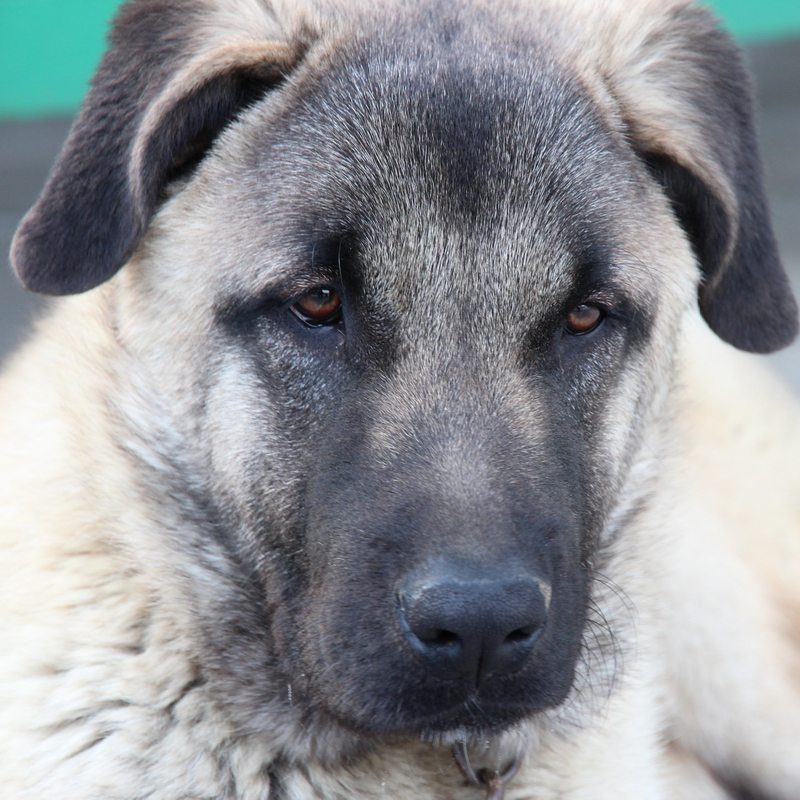
The Kangal, a breed that commands respect with its dignified stance and profound loyalty, is a guardian not just of flocks but of the hearts of those who care for them. Originating from the rugged landscapes of Turkey, the Kangal is a breed that has been shaped by the demands of guarding livestock against formidable predators. This task requires a dog that is not only physically capable but also intelligent, independent, and discerning.
Training a Kangal is not a task to be taken lightly. It requires an understanding of the breed’s unique characteristics and a tailored approach that respects their intelligence and independence. Traditional training methods that rely on strict obedience and food rewards do not align well with the Kangal’s nature. Instead, they respond to training that incorporates positive reinforcement, recognizing their inherent traits and working with them rather than against them.
The Kangal’s independent nature means they are not always eager to please in the way some other breeds might be. They are thinkers, often assessing a situation before taking action. This characteristic, while admirable, can also present challenges during training. Patience and consistency are key. The trainer must establish themselves as a leader worthy of the Kangal’s respect without resorting to harsh methods. A Kangal will not respond well to negative treatment; instead, they require a firm yet gentle hand.
Positive reinforcement is the cornerstone of effective Kangal training. This does not necessarily mean treats, as food is not the primary motivator for this breed. Rather, a kind word, a gentle pat, or a moment of praise are more meaningful rewards for a Kangal. They seek approval from their trusted humans, and this desire can be harnessed as a powerful training tool.
The Kangal’s background as a nocturnal guardian should also be considered. Their performance peaks during the cooler, quieter hours of the night, which is a remnant of their evolution alongside their close relative, the gray wolf. Training sessions may need to be adjusted to accommodate this preference, ensuring that the Kangal is at their most receptive and active.
Understanding the Kangal’s need for a balance between freedom and dependency is crucial. They are a breed that values their autonomy, yet they are also deeply devoted to their owners. Training should not stifle their need for independence but should reinforce the bond between dog and trainer, creating a partnership based on mutual respect and understanding.
For those looking to train a Kangal, it is essential to approach the task with knowledge and empathy. Recognize the breed’s distinct qualities and harness them in your training methods. With the right approach, the Kangal will not only be a well-trained guardian but also a loyal and cherished companion.
For more detailed insights into Kangal training, you can explore resources that delve into the principles of training this majestic breed or consider scheduling a consultation with a professional who specializes in working with guardian breeds. Remember, every Kangal is an individual, and training should be adapted to suit their unique personality and needs.
Common Training Mistakes
Navigating the Challenges of Training a Kangal: Common Pitfalls to Avoid
The Kangal, a breed renowned for its strength, loyalty, and protective instincts, is a noble guardian that has been a part of human lives for centuries. Training such a majestic breed comes with its own set of challenges and requires a nuanced understanding of their temperament and needs. Here are some common mistakes that trainers and owners should avoid to ensure a harmonious and effective training experience with their Kangal.
- Ignoring the Breed’s Independence: Kangals are known for their independent nature, which can often be mistaken for stubbornness. It’s crucial to respect this trait and not force the dog into submission or obedience. Instead, work with their independence, and use it to your advantage by encouraging decision-making and offering choices during training sessions.
- Overlooking the Need for Early Socialization: Kangals thrive on social interaction, and it’s essential to expose them to various environments, people, and other animals from a young age. This helps prevent the development of overprotective and aggressive behaviors, which can be a natural inclination for guardian breeds.
- Using Negative Reinforcement: Harsh treatment and strict commands can backfire with a Kangal. They may respond with similar aggression or become withdrawn. Positive reinforcement, such as praise and physical affection, is far more effective in building trust and cooperation.
- Forgetting the Kangal’s Nocturnal Tendencies: Kangals are more active and alert at night, a trait inherited from their ancestors. Training sessions should be scheduled to align with their natural activity peaks, ensuring they are attentive and responsive.
- Neglecting the Dog’s Need for Physical Exercise: As a breed that’s accustomed to roaming vast landscapes, Kangals require ample space and time for physical activity. A lack of exercise can lead to boredom and destructive behavior. Ensure they have a routine that includes plenty of outdoor time and mental stimulation.
- Failing to Establish Leadership: While Kangals are independent, they also look for a leader they can trust and respect. Trainers must establish themselves as the pack leader through consistent, fair, and respectful training practices. This does not mean being domineering but rather showing confident and calm leadership.
- Not Tailoring Training to the Individual Dog: Each Kangal has its own personality and learning style. It’s a mistake to apply a one-size-fits-all approach to training. Pay attention to the dog’s cues and adapt your methods to suit their individual needs and preferences.
- Expecting Immediate Results: Training a Kangal, or any dog for that matter, is a process that requires patience and time. Expecting quick results can lead to frustration for both the trainer and the dog. Celebrate small victories and understand that progress may be gradual.
By avoiding these common mistakes, trainers and owners can foster a positive and productive training environment for their Kangal. Remember, the goal is to build a bond based on mutual respect and understanding, which will lead to a well-adjusted and well-behaved companion. For those seeking further guidance, there are resources available that provide in-depth strategies tailored to the Kangal breed. With the right approach, training your Kangal can be a rewarding experience that strengthens the bond between you and your majestic guardian.
Understanding the Behavioral Challenges
The Kangal dog breed, originating from Turkey, is renowned for its strength, protective instincts, and loyalty. These dogs have historically served as guardians for livestock, deterring predators such as wolves and bears with their formidable presence and courage. However, owning a Kangal comes with a unique set of behavioral challenges that potential owners should be aware of.
One of the most significant challenges is the Kangal’s territorial nature. These dogs are fiercely protective of their space and can exhibit dominance towards other animals, which can sometimes translate into aggression if not managed properly. This trait stems from their role as livestock guardians, where they had to make independent decisions to protect their flock.
Kangals are also known for their independence and stubbornness. They are intelligent dogs that have been bred to think for themselves and make quick decisions in the field. This can make training a bit challenging, as they may not always follow commands blindly. Consistent, patient, and positive reinforcement-based training is essential to guide a Kangal into well-behaved companionship.
Exercise is another crucial aspect of a Kangal’s life. They are not suited to a sedentary lifestyle and require regular physical activity to maintain their health and prevent behavioral issues. A Kangal without a job or adequate exercise can develop nuisance behaviors out of sheer boredom.
Grooming is also an important routine for the Kangal, given their double-layered coat. Regular brushing and bathing are necessary to keep their coat in good condition and to manage shedding.
In summary, while the Kangal breed is loyal, affectionate, and has a majestic stature, they are best suited for owners who can provide them with a job, ample space, and the right training and socialization. Understanding and addressing the behavioral challenges of the Kangal breed is key to ensuring a harmonious relationship between the dog and its owner. For those considering a Kangal as a pet, it’s important to remember that this breed requires a dedicated and experienced handler to thrive.
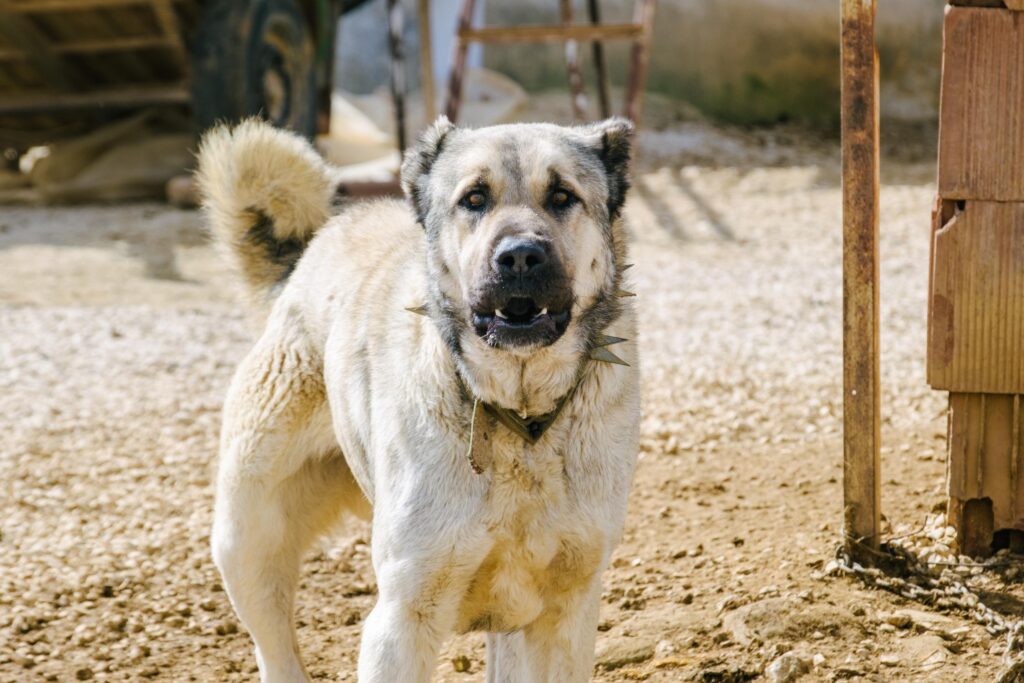
Legal
Understanding the Legal Challenges of the Kangal Breed
The Kangal, a breed with a storied history and a formidable presence, has faced various legal challenges across the globe. Originating from Turkey, these dogs are renowned for their strength, protective instincts, and loyalty. However, their very nature that makes them excellent livestock guardians also brings them under scrutiny in different legal frameworks.
In some regions, Kangals are classified under ‘dangerous dogs’ due to their powerful bite force, measured at a staggering 743 PSI. This classification can lead to restrictions or special requirements for ownership, such as mandatory training, secure containment, or even prohibition in certain areas. The legal implications for potential owners are significant, as failure to comply with these regulations can result in legal consequences and, more importantly, can compromise the safety of both the dog and the community.
The question of what a force of 743 PSI can do to the human body is a serious one, as it relates to the potential for injury under extreme pressures. It’s important to understand that the human body is remarkably resilient, yet it has its limits.
Research indicates that the human body can survive relatively high blast overpressure without experiencing barotrauma. For example, a 5 psi blast overpressure might rupture eardrums in about 1% of subjects, and a 45 psi overpressure will cause eardrum rupture in about 99% of all subjects. The threshold for lung damage occurs at about 15 psi blast overpressure.
When considering a force as high as 743 PSI, it’s well beyond the survivable range for humans. Such a force could result in catastrophic injuries to the body. At much lower levels, around 65 atm or bars, divers can experience life-threatening conditions due to the pressure. At 743 PSI, which is equivalent to approximately 51 atm or bars, the pressure exerted on the body would be immense, likely leading to severe trauma.
It’s crucial to approach such topics with sensitivity and a focus on safety. Discussions about the effects of high pressure on the human body are not only theoretical but have real-world implications in fields such as diving, aerospace, and medical science. Understanding these effects helps improve safety protocols and protective equipment design to prevent such injuries.
For more detailed information on the effects of pressure on the human body and safety thresholds, resources and studies are available that provide deeper insights into this subject.
Moreover, the breed’s prowess in protecting livestock from predators like wolves has sparked debates on the ethical considerations of using dogs in predator control. While some view the Kangal’s abilities as a natural and necessary part of livestock management, others raise concerns about the welfare of both the dogs and the wildlife involved.
Adding to the complexity is the cultural significance of the Kangal in Turkey, where they are not only a symbol of strength and protection but also a point of national pride. The Turkish government has imposed a ban on the export of Kangals to preserve the breed’s integrity, discourage unregulated breeding practices, and prevent dogfighting. This ban highlights the delicate balance between cultural preservation and the global demand for these majestic dogs.
The legal landscape for Kangal ownership in the United States varies widely, with some regions banning the breed outright. Prospective owners must navigate a maze of local and state regulations, which underscores the importance of thorough research and understanding of the breed before considering ownership.
The Kangal’s situation is a prime example of the intricate relationship between breed characteristics, legal systems, cultural values, and ethical considerations. It serves as a reminder that dog ownership is not just a personal choice but a responsibility that extends to the broader community and the environment we share with our canine companions.
For those interested in learning more about the Kangal breed and the legal challenges associated with it, further reading and resources are available through various canine journals and breed-specific organizations. It is crucial for current and potential owners, breeders, and enthusiasts to stay informed and engaged in the conversation surrounding this noble breed.

